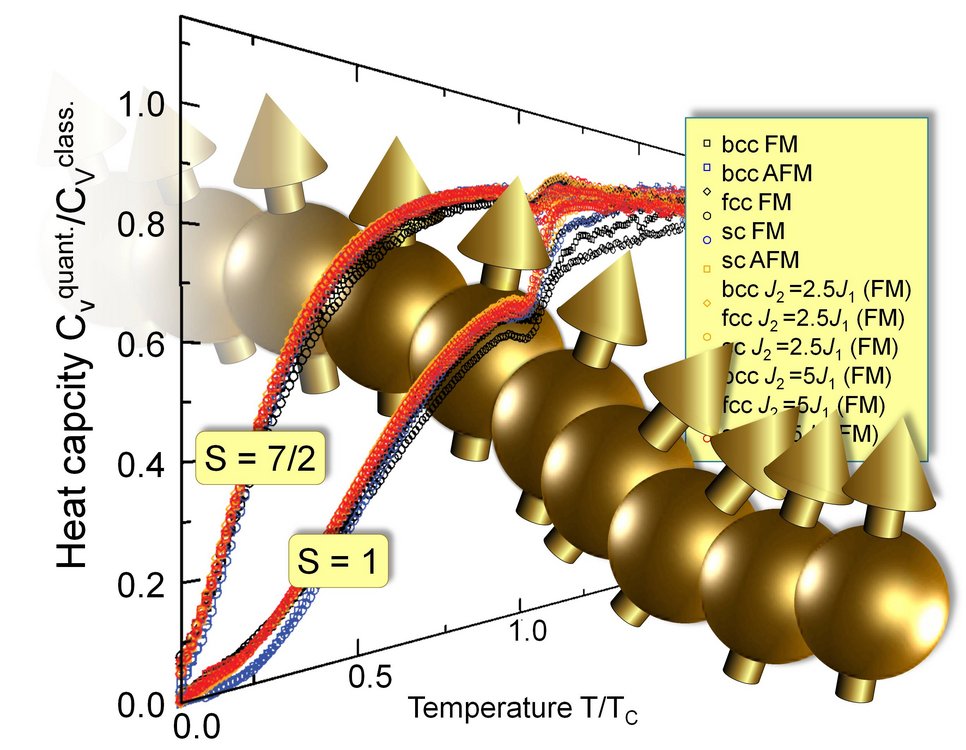The main challenge in ab initio calculating free energies is related to the fact that DFT is originally designed to predict ground state properties only. Its extension to finite temperatures means that excitation processes carefully need to be taken into consideration [1]. Considering vibrational and electronic excitations, a remarkable agreement with data obtained from ThermoCalc has been obtained for non-magnetic unary metals [2]. These concepts have been extended towards the consideration of anharmonic lattice vibrations [3], of entropically stabilized vacancies [4], and of thermodynamically unstable phases.
For Fe-based materials and steels, the magnetic excitations form the most challenging contribution for a computational materials design, both with respect to methodological and numerical concepts, due the long range interactions and spin-quantization. It turns out that even well above room temperature it is essential to take the spin quantization into account in order to obtain reliable heat capacities of materials (Fig.). By the development of various new techniques, spin quantum Monte-Carlo simulations could be generalized to allow for the treatment of realistic spin Hamiltonians. Using our newly developed approaches it has been possible to achieve impressive agreements of the thermodynamic properties of all unary metals [5] and compounds [6] with experiments. Another important issue is the development of methods for the influence of magnetic excitations on other thermodynamic properties such as lattice vibrations. As demonstrated for Fe it now became possible to perform phonon calculations even for the challenging case of paramagnetic disorder [7].

